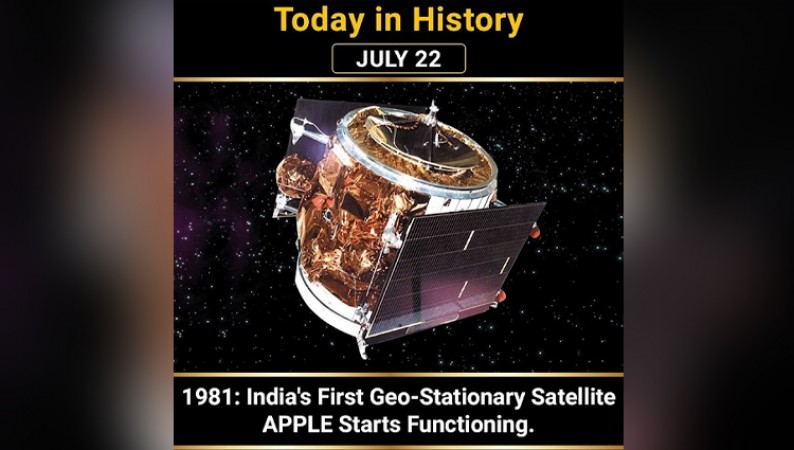
THIS DAY IN HISTORY: On July 22nd, 1981, India marked a historic milestone in its space exploration journey with the successful functioning of its first geostationary satellite, APPLE (Ariane Passenger Payload Experiment). This achievement not only propelled India into the league of advanced spacefaring nations but also laid the foundation for its future endeavors in space technology and communication.
The Genesis of APPLE: The concept of the APPLE satellite was first conceived in the early 1970s when India's space agency, the Indian Space Research Organisation (ISRO), recognized the pressing need for a domestic communication satellite to improve telecommunications across the country. Prior to APPLE, India was heavily reliant on international satellites for communication services, which posed limitations in terms of coverage and autonomy.
The APPLE project was initiated with the goal of developing a reliable, indigenous communication satellite that would be positioned in geostationary orbit, approximately 36,000 kilometers above the equator. This orbit would allow the satellite to move in sync with the Earth's rotation, appearing stationary from a fixed location on the ground. As a result, it could provide continuous and uninterrupted communication coverage over a designated region.
The Launch and Early Challenges: On June 19th, 1981, the APPLE satellite was successfully launched into space by the European Space Agency (ESA) using their Ariane-1 launch vehicle from the Guiana Space Centre in Kourou, French Guiana. The launch marked a crucial moment for India's space program and ignited a sense of national pride and achievement.
In the initial days after the launch, ISRO faced some challenges in stabilizing the satellite's position due to issues with its onboard propulsion system. However, the dedication and ingenuity of the scientists and engineers at ISRO paid off as they managed to rectify the problem, enabling the satellite to stabilize itself and achieve a geostationary orbit.
The Functioning of APPLE: Once successfully positioned in geostationary orbit, APPLE began its primary function of providing various communication services. The satellite was equipped with transponders and C-band and S-band frequency antennas, enabling it to offer telecommunications, television broadcasting, and weather monitoring services across the Indian subcontinent.
APPLE significantly enhanced India's telecommunications infrastructure, bridging communication gaps between urban and rural areas, and facilitating intercontinental communication. It played a pivotal role in expanding India's broadcasting capabilities, enabling the reach of educational programs, news, and entertainment to millions of households.
Legacy and Impact: The successful functioning of APPLE set the stage for ISRO's subsequent achievements in space technology. It demonstrated India's capability to design, develop, and operate sophisticated satellites, paving the way for future advancements in space research and exploration.
Furthermore, the APPLE project facilitated international collaborations and knowledge sharing, as India gained valuable experience from its partnership with the ESA for the satellite launch. This marked the beginning of ISRO's reputation as a reliable and capable space agency, leading to several international collaborations and commercial satellite launches in the future.
July 22nd, 1981, remains a significant date in India's space exploration history, as it marked the commencement of APPLE's successful functioning as India's first geostationary satellite. The project showcased the nation's technological prowess, boosting national pride and inspiring generations of scientists and engineers. The legacy of APPLE lives on as it laid the groundwork for the advancement of India's space program, making significant contributions to telecommunications, broadcasting, and weather monitoring. This historic achievement continues to inspire India's pursuit of excellence in space technology and its quest for new frontiers in the cosmos.